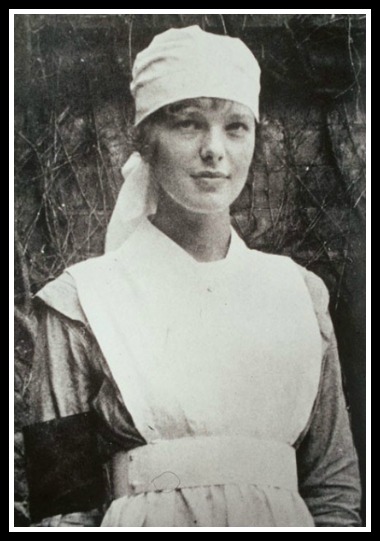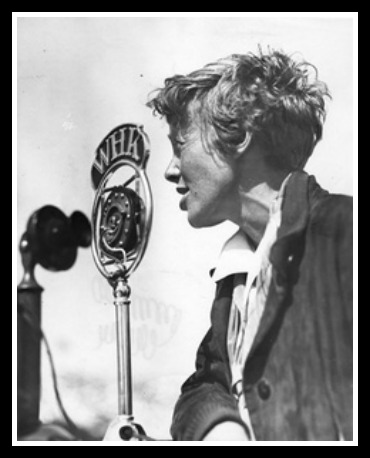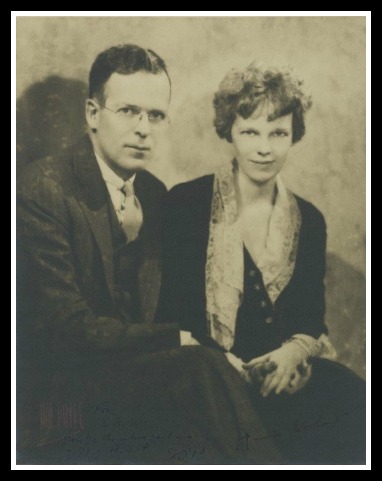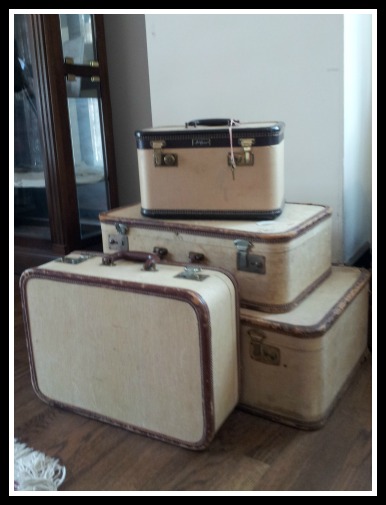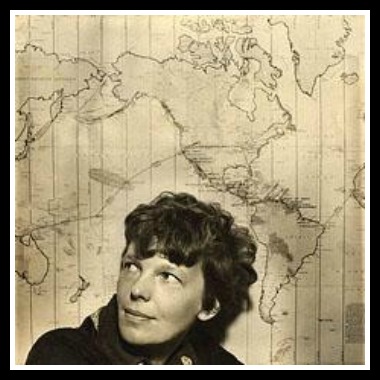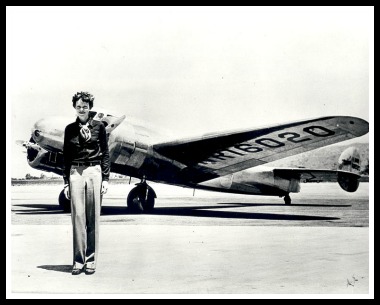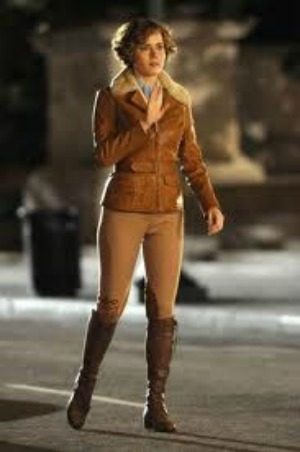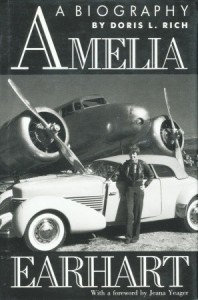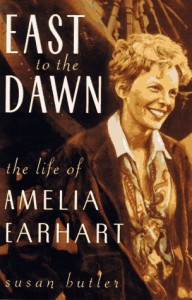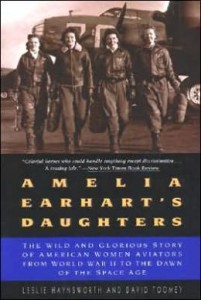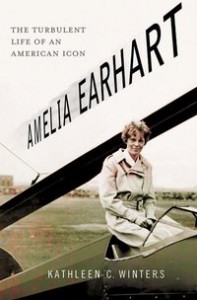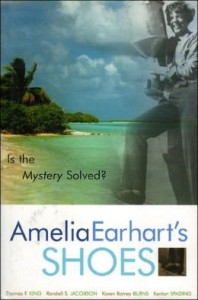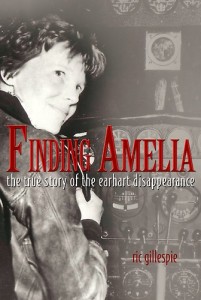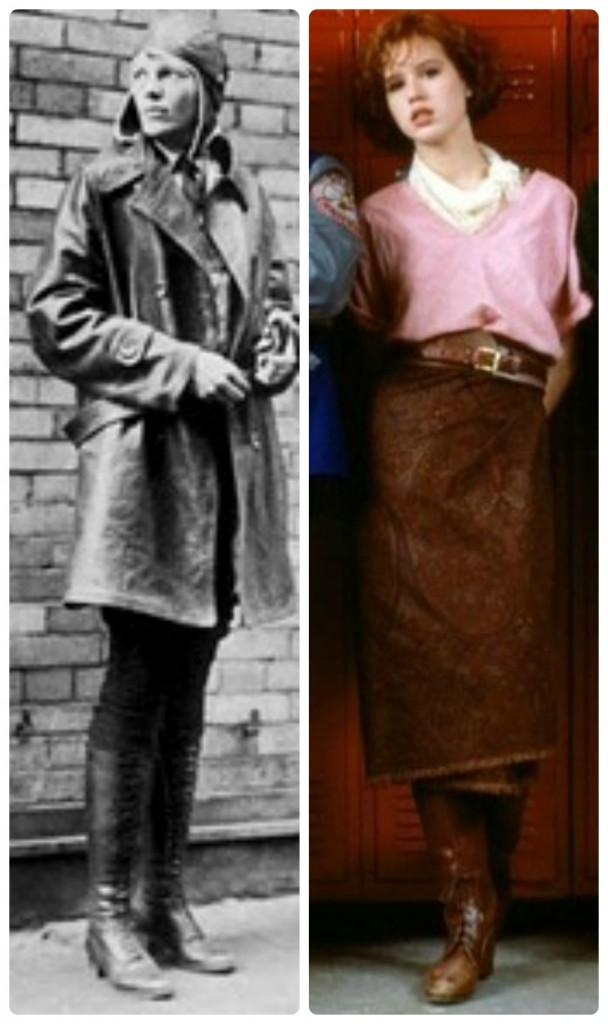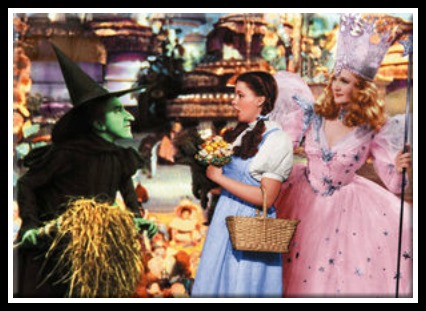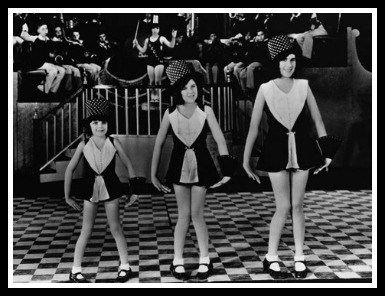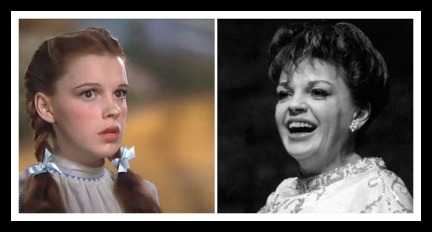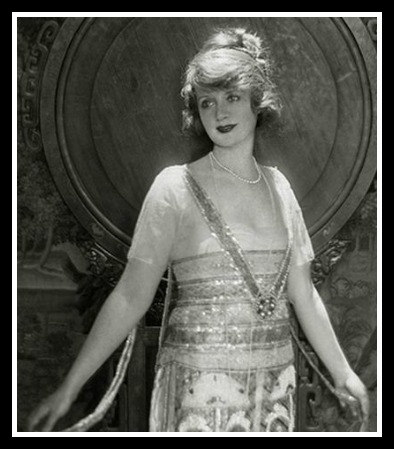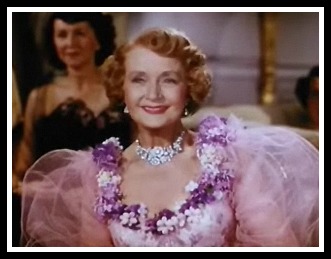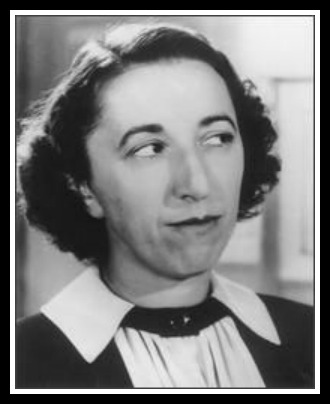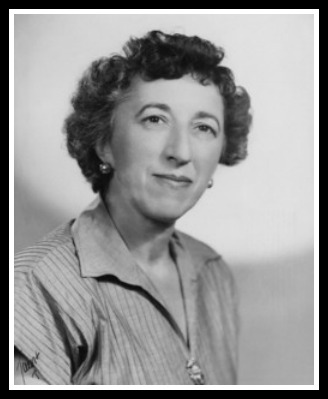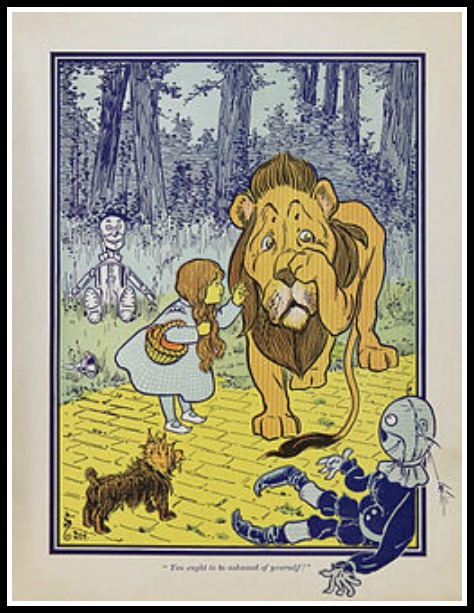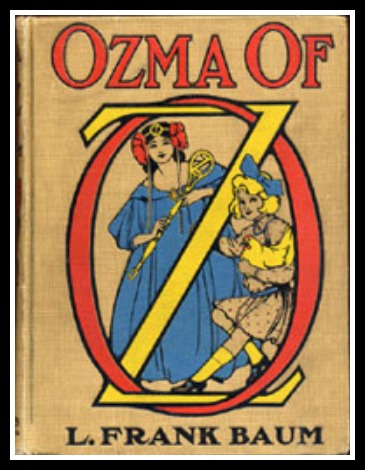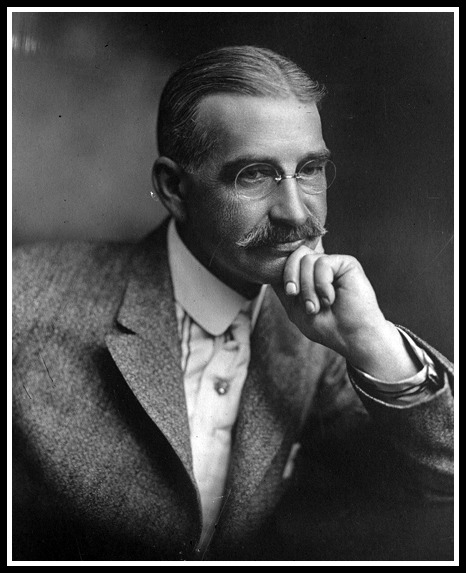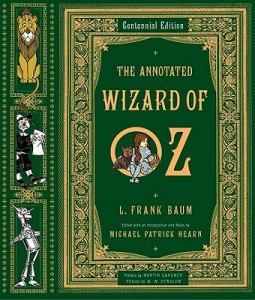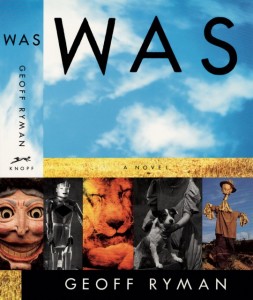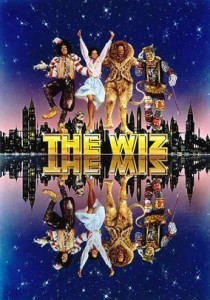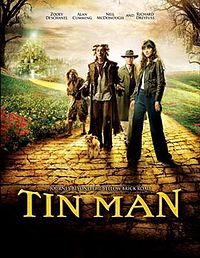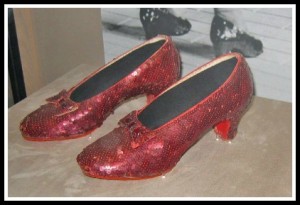Episode 39: Amelia Earhart
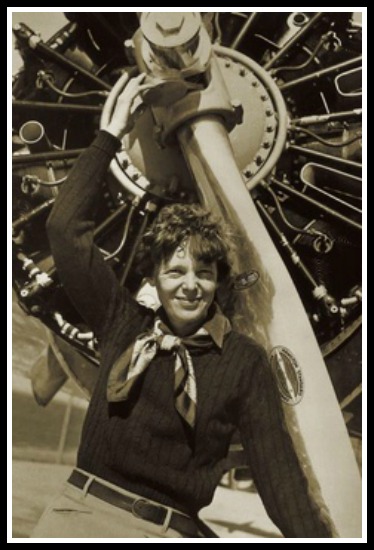 Not only was Amelia launched into the public spotlight, she was launched there by the man who would become her husband- George Putnam. Ok, so he was married but that was a detail that could be overcome to the satisfaction of all parties involved. They were wed and began a business/personal partnership that would last ’til the end of her life (oh, you know we love a good wedding story, and Amelia and George had one- listen to the podcast!).
Putnam was a master at publicity. His skill and experience and Amelia’s interest in bringing aviation to women (as well as logging as much flight time as she could) combined to be a powerful package. She writes a couple books, sets record after record, lectures, organizes a cross-country air derby and a female aviators organization, writes for Cosmopolitan magazine, worked at Purdue university encouraging female students, designs women’s clothing and luggage. Yes, luggage. Her name was highly marketable and George was brilliant at marketing it.
In 1937 Amelia set off for what she thought was her final adventure- flying around the world along the lines of the equator. She said, “I am undertaking this one solely because I want to and because I feel that women now and then have to do things to show what women can do.”
Preach it, Amelia!
We cover the final flight, as well as a number of theories as to what happened in the podcast, but anyone reading this surely knows the story: On what was to be her last leg of her flight something that may never be known happened. And, on July 3, 1937 at 8:43 AM the last known message of Amelia Earhart was heard. Amelia and her plane were never recovered.
TIME TRAVEL WITH THE HISTORY CHICKS
The Amelia Earhart Museum in Atchison, Kansas is pretty nifty. It looked like this the day we visited. Oh, yes we did! More to come on that field trip, we promise.
Not only was Amelia launched into the public spotlight, she was launched there by the man who would become her husband- George Putnam. Ok, so he was married but that was a detail that could be overcome to the satisfaction of all parties involved. They were wed and began a business/personal partnership that would last ’til the end of her life (oh, you know we love a good wedding story, and Amelia and George had one- listen to the podcast!).
Putnam was a master at publicity. His skill and experience and Amelia’s interest in bringing aviation to women (as well as logging as much flight time as she could) combined to be a powerful package. She writes a couple books, sets record after record, lectures, organizes a cross-country air derby and a female aviators organization, writes for Cosmopolitan magazine, worked at Purdue university encouraging female students, designs women’s clothing and luggage. Yes, luggage. Her name was highly marketable and George was brilliant at marketing it.
In 1937 Amelia set off for what she thought was her final adventure- flying around the world along the lines of the equator. She said, “I am undertaking this one solely because I want to and because I feel that women now and then have to do things to show what women can do.”
Preach it, Amelia!
We cover the final flight, as well as a number of theories as to what happened in the podcast, but anyone reading this surely knows the story: On what was to be her last leg of her flight something that may never be known happened. And, on July 3, 1937 at 8:43 AM the last known message of Amelia Earhart was heard. Amelia and her plane were never recovered.
TIME TRAVEL WITH THE HISTORY CHICKS
The Amelia Earhart Museum in Atchison, Kansas is pretty nifty. It looked like this the day we visited. Oh, yes we did! More to come on that field trip, we promise.
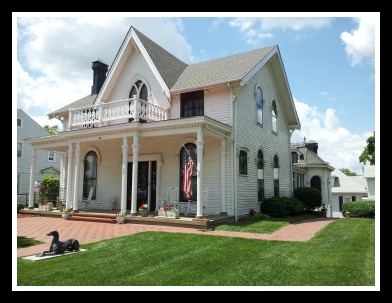
Amelia Earhart museum- this is her birthplace, where she lived with her grandparents! We took our kids and geeked out.
MOVIES! 2009 Amelia with Hilary Swank and Richard Gere, and the Biography documentary are available from Netflix. There was an Emmy winning 1994 miniseries with Diane Keaton, and The Last Flight with Rosalind Russel but we can’t find them online- might be your own adventure in research to dig up a copy. And, it’s a stretch, but Amy Adams plays Amelia in Night at the Museum II.
BOOKS!
It might be fun to start out reading the two books that Amelia penned: 20 Hours, 40 Minutes, and The Fun of It.
Non-fiction that we also liked about her life:
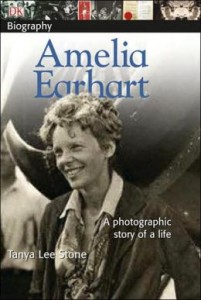
By Tanya Lee Stone- really good for kids, or people who like a lot of pictures (hey, we like pictures, no shame in that!)
When you want to really nerd out about her disappearance here are some books for you:
If you want to see and read about her yellow Kissel Speedster, check out the ForneyMuseum! Finally, Amelia’s boots and Molly’s boots…no picture of Beckett in hers, sad to report.As always, music comes courtesy of Music Alley. Visit them at Music.mevio.com
Bookcast: Jane Austen Book Club
All podcast episodes for the three parts are listed below.
As a companion to Episode 38: Jane Austen, we got together and had ourselves a proper book club meeting.
Well, mostly proper. (though nothing as exciting as a loss of continence…)
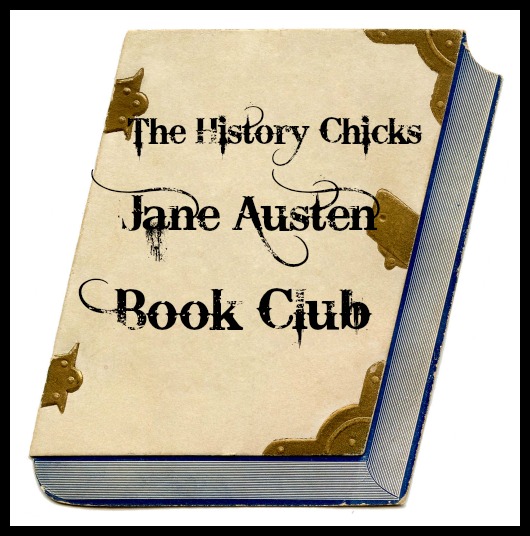
And it was more like a gathering around a microphone than a meeting, but talk of books we did! Titles for discussion: All six of Jane Austen’s published novels.
We followed the same chat format for each of the books: trivia on the road to publishing, plot, characters, our reactions, movies and/or books by other authors that are related to the novel and finally a favorite quote.
We split these novels into three minicasts in the interest of time.
Episode 1: Sense and Sensibility and Pride and Prejudice
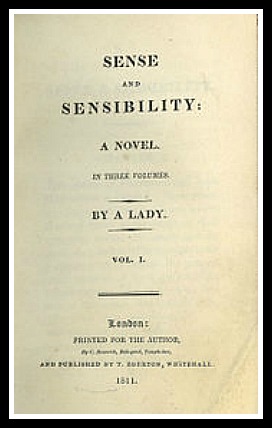
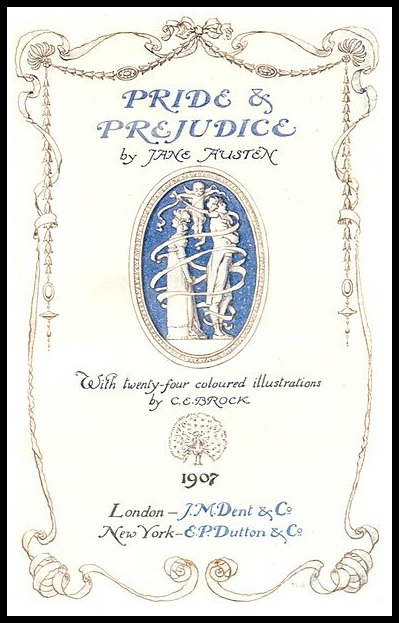
Episode 2: Mansfield Park and Emma
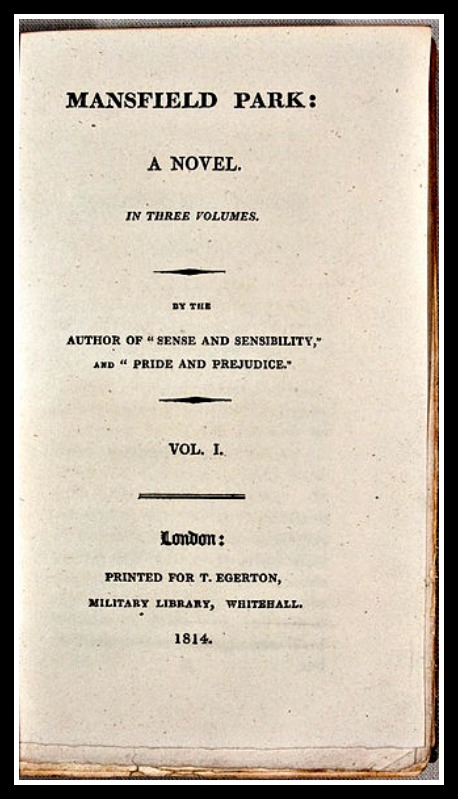
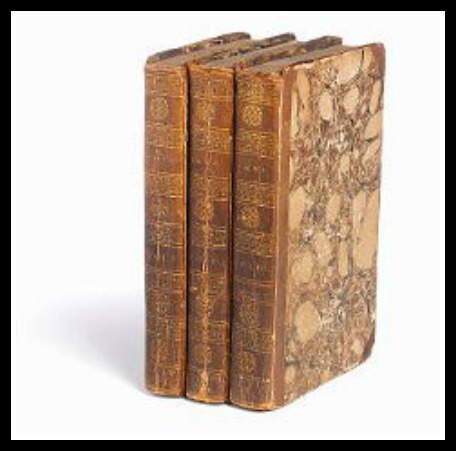
Episode 3: Persuasion and Northanger Abbey
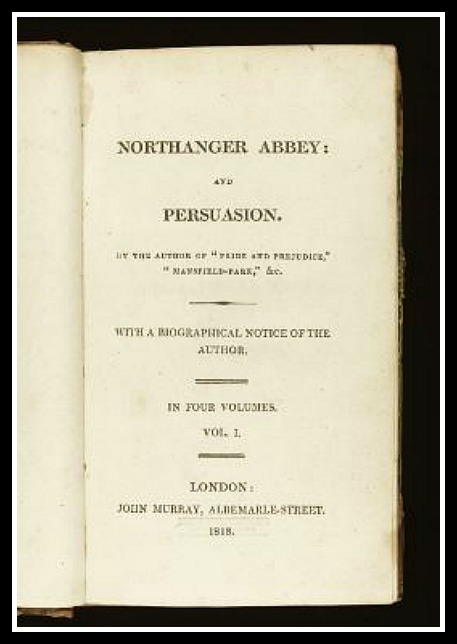
Episode 38: Jane Austen
A little birdie told us that a lot of you wanted an episode about the life and work of Jane Austen.
That would be several little birdies who tweet, post on facebook, write emails and vote on our Guaranteed Content Poll. During this episode we do exactly what you have asked (over and over again) and chat about the life of author Jane Austen.
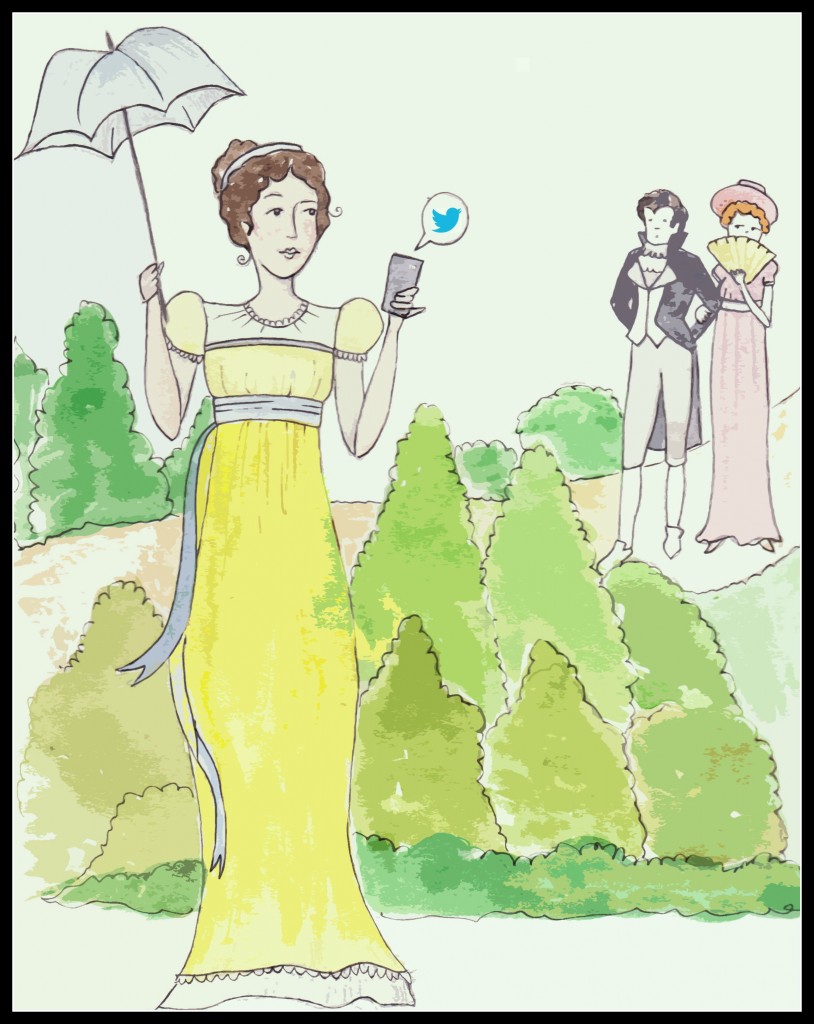
Jane’s real life wasn’t exactly like the ones that she painted for the heroines in her novels. She was born into a family of modest means and lived that way for her entire life. Like a few of her characters, her best friend and confidante was her sister – but unlike most of them, she never married. Four of Jane’s novels were published but only within her last few years (and she was never credited by name as the author); two more were published after her death. She did enjoy a social life, but lived a very ordinary, quiet and private existence. There is only one confirmed picture of her, and even that was a sketch done by her sister. People who knew Jane claimed that it didn’t quite capture her appearance. Oh, Jane, this is but one mystery in your wake!
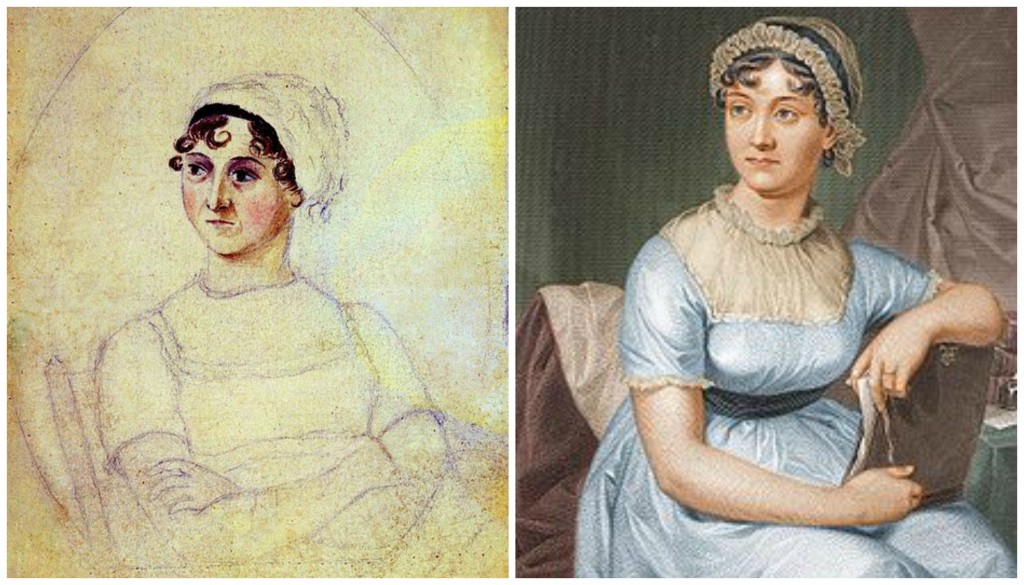
Jane Austen was born December 16, 1775 at Steventon Rectory, Hampshire England where her father, George, was the Oxford-educated parish Rector. Jane was the seventh of eight children, and only the second daughter. Sister Cassandra (who was three years older and named after Mum) would remain close to Jane for her whole life. Parents Austen believed strongly in education and reading and maintained a very loving (and wildly rambunctious) household. Not only was the home filled with Austen children, but Rev. Austen took in several more boys and turned the home into a boarding school.
After a relatively brief and traumatic stint at a couple of girls boarding schools, Jane’s formal education was complete. Her father’s library and educational materials were available to her and, supplemented by the occasional tutor, she learned to play the piano, speak French, some Italian and do needlework. And she wrote. Quite a bit. Not merely letters, which were the primary communication device of the time, but she began to write poems, short stories, plays and short novels. This collection of work is now known as Jane’s Juvenilia which was eventually published in the 1930’s. The most humorous to us is this 15 page History of England from the Reign of Henry the 4th to the Death of Charles the 7th: By a Partial, Prejudiced and Ignorant Historian. Illustrated by sister Cassandra, it shows the early wit of a writer who would later mock many a social convention.
As the Austen sisters grew to a marrying age both had episodes of love and heartbreak. Cassandra was engaged for a period, although he died while attempting to earn enough money for them to marry. Jane had two recorded (and one suggested and mysterious) relationships. The first was a hot and heavy flirtation with a young man who, when his parents realized he was smitten with the unmonied Jane, was made an offer he couldn’t refuse and left Jane. The second was a very (oh so very) brief engagement that lasted a whole evening. It wasn’t that Jane didn’t like to socialize, she was very social and loved to dance- but this is one more mystery in her legacy.
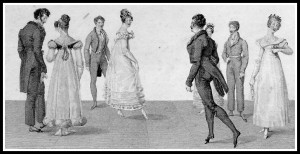
Why so much mystery? Certainly there was correspondence, or some type of primary source documentation? There was. Accent on “was”. For some reason, Cassandra (as well as some of the Austen brothers) destroyed most (as in: several thousand down to a couple hundred) of the letters that Jane sent. Most of the story of her adult years had to be cobbled together through other accounts, and some parts will never, truly be understood. For instance: As two unmarried women of the time Jane and Cassandra were utterly dependent upon their family for survival. When Papa retired, the foursome moved to Bath. Jane’s opinions about the move as well as how she felt during that time are mostly unknown as she stopped writing her as yet unpublished novels, and there are few letters that remain from her.
We do know that she carried around three manuscripts- precious cargo they were- as she traveled to visit family and friends while Bath was her home base. Later, she lugged them around again as she and her female relations set to find financial support after the death of her father. It wasn’t until Jane, Cassandra and their mother set up house in Chawton Cottage, part of a property owned by an elder brother, did Jane begin to write again.
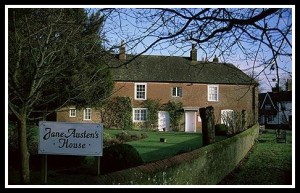
And write she did!
In 1811 Jane’s first novel, Sense and Sensibility was published in three volumes. We will cover all of Jane’s books in a separate episode, but publication came pretty quickly from this point until her death. Pride and Prejudice, Mansfield Park and Emma followed in print over the next few years.

However, Jane became ill- weak and in chronic pain- her writing slowed down. On July 18th, 1817 at the age of 41, Jane Austen died in the arms of her beloved sister. Her final two novels, Persuasion and Northanger Abbey were published together after her death. We cover many more details of Jane’s life, as well as some interesting tidbits about the Georgian and Regency periods, in the podcast. We also discuss Jane’s long lasting appeal- why her chronicling and wry observations of the Regency period ignite a level of intrigue in millions wonder who still wonder what other works she may have had in her future if death hadn’t stilled her passion.
TIME TRAVEL WITH THE HISTORY CHICKS
Make your plans now to attend one of any number of events worldwide commemorating the 200th anniversary of Pride and Prejudice! Here is a calendar! The closest to us is in Louisville…hmmmm?
You want to meet the other Janeites, right? Get in-depth information and talk about every aspect of the life and work of this woman? Visit the website (facebook page, twitter) of your nearest Jane Austen Society and dive in. Jane Austen Society of North America.
Google it yourself, there are so many websites devoted to Jane that we couldn’t possibly compile a list, merely give you a few to start with. How about- The Republic of Pemberley? This site is a feast of intel and hosts an active community.
Or maybe- Seeking Jane Austen.com which is a guide to the locations associated with Jane.
Jane Austen Fight Club video!
For the over 21 crowd: The Jane Austen Drinking Game. (Countenance: A calm and composed facial expression. Continence: The ability to retain bodily discharge. Yes, let’s all laugh again.)
While you are clicking around online, go take a tour of Jane Austen’s House Museum which is kind enough to provide a virtual tour (Oh, you know we love a good virtual tour). This is is where she wrote the bulk of her published novels and was her last home. Or better: plan a trip around Austen! There are maaaany websites to assist you on this, and most of the links we provided will get you started, here is one to start with The World of Jane Austen. Remember to send us a postcard!
Books! Again, we had a stack of materials to choose from and narrowed it down to our favorites (although many others were quite good and it is fair to say that we have OD’d on Austen)
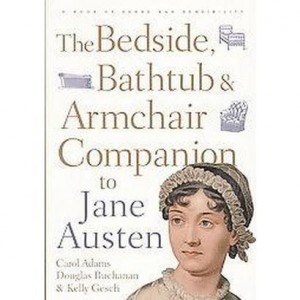
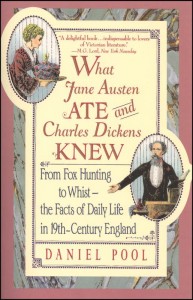
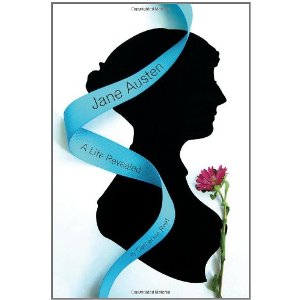

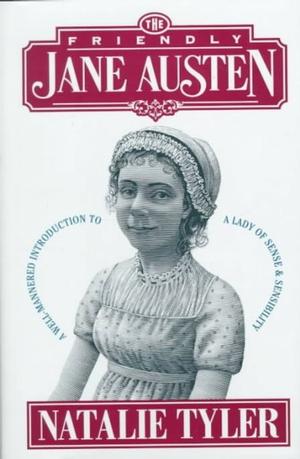
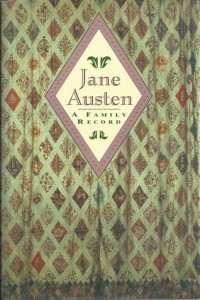
We always recommend Supersizers, Go! and they don’t disappoint with the episode based on the Regency Period.
A very big thank you to Lisa Graves who crafted the irrelevant Jane illustration tweeting from the top of this post. We both adore her work and style (she also graciously did the illustration for our Julia Child episode) and are thrilled to share that she has author/illustrated a History Witch book coming in June! Visit her site History Witch for more of her charming women’s history illustrations and oddities about some of histories most colorful women.
As always, our music comes courtesy of Music Alley. Visit them at Music.mevio.com
(Closing song: Know Which Way the Wind Blows” by The Postmarks)
Episode 37A Minicast: The Women of Oz
During our full length Oz episode we talked about several women who were associated with Oz the stories: Dorothy, Ozma, the witches, Maud Gage Baum and others. We didn’t talk about the women associated with the 1939 MGM classic, The Wizard of Oz: Judy Garland, Billie Burke and Margaret Hamilton. Consider them now covered in this chat about the lives of the three female lead actresses from that timeless musical.
Judy Garland
Francis Ethel Gumm was born on June 10, 1922 in Grand Rapids, Minnesota to Francis and Ethel Gumm. What her parents lacked in creative baby naming, they made up for in show business savvy and soon “Baby” was performing with her two older sisters on the vaudeville stage run by her parents. A dalliance of Papa forced the family to move to California four years after her birth where they opened another vaudeville theater and Mama set to making her darlings stars.
The girls studied singing, dancing, acting and went on tour with their mother managing them. There are conflicting stories about how they changed their name to Garland- but the Garland sisters they became for one year…until the trio broke up when older sister Suzy eloped.
Francis, now called Judy,became a solo act and at 13 signed with MGM. They didn’t know exactly how to cast her- too old for little girl roles, not sexy or skinny enough for vava-voom teen roles- they found a place for her paired with Boy Teen Hearthrob- Mickey Rooney. On a grueling filming schedule, and physically curving out they also put her on amphetamines to give her energy and help her get thin, and sleeping pills to counteract those. (We all know this doesn’t end well, right?)
At the age of 16 she was cast in the role of Dorothy.(And we all know how that worked out, too, right?)
After Oz, Judy went on to make many more musicals and her own life became more dramatic than any film. First married at 19 to band leader, David Rose-that marriage ended three years later when she fell for film director Vincent Minelli. That marriage lasted for one child (Liza) and about six years. By 30 she was twice divorced, was becoming known as being unreliable and dropped by MGM.
A third marriage to producer Sid Luft, two more children (Lorna and Joey) and a career touring as a stage act followed. She did make a few more movies, had a short lived television variety show, a very bitter divorce, two more marriages before financial financial troubles really set in. On June 22nd 1969 while in London she died of an accidental drug overdose.
She was only 47.
Billie Burke
(Deep breath) Mary William Ethelbert Appleton Burke was born on August 7th, 1884 in Washington, DC. Her father was a circus clown (no, really, he was!) and she spent a great deal of her childhood traveling with the circus…really! We know, cool. At 18 her family settled in London where she made her stage debut as an actress. By age 22 she was on Broadway. Shortly after that, Hollywood was calling and she answered. She decided that she preferred stage work and headed back to New York.
It was there that she met her husband, show producer, Florenz Ziegfeld. Marriage and one child followed, but the family was plummeted into financial difficulties during the Crash of ’29. Within three years, Flo would be dead and Billie was back in movies to support her and her daughter, Patricia. (For more on Flo Ziegfeld and his show, see this post by our friends, The Bowery Boys)
Billie was usually type-cast as an upper class ditz with a high-pitched voice. She mostly appeared in comedies and musicals and in 1938- at the age of 54 we might add- she was cast to play Glinda, the good witch.
After Oz her career really didn’t slow down much. She would ultimately make over 80 movies,, have her own radio and television shows, and appear in stage productions. She retired from acting in 1960, and died from natural causes on May 14th, 1979 at the age of 85.
Margaret Hamilton
Margaret Brainard Hamilton was born on December 9th, 1902 in Cleveland, Ohio. She attended an all-girls school and while she made her stage debut at 18, her parents insisted that she go to college. After college she became a kindergarten teacher, married and had one son…this life doesn’t really sound like the life of a movie star, does it? She did begin her acting career on the New York stage, but once she divorced her husband and was left to raise her son alone she kicked that acting career into overdrive.
As a character actress, Margaret thought that she stood a better chance of getting work if she didn’t sign with one studio. Instead she made a very nice living traveling between them all and asking for weekly wages. When she was cast in Oz, she was guaranteed six weeks work…which turned into 23!
Her post Oz career included radio shows, television shows, a soap opera, and a very long run as the spokesperson for a coffee company. She was a lifelong supporter of education, made over 70 films and appeared in almost as many stage productions.
Following a heart attack, Margaret died in her sleep at the age of 82 on May 16th, 1985.
For media and book links to all things Oz, please see the shownotes from the Episode 37: The Wizard of Oz
As always, music comes courtesy of Music Alley, visit them at music.mevio.com
Episode 37: The Wizard of Oz
Once a season we step away from factual subjects and focus on a fictional one. This season we traveled to the land of Oz and took a look around.
“But Chicks,” you say,”a Wizard is a man.”
To that we respond: Thank you for pointing this out. Yes, the Wizard is a man, and L. Frank Baum is a man…but Oz is full of women! Dorothy! Glinda! Ozma! Oz is a land of female rulers and strong charactered inhabitants- how could we not talk about it? (Besides, we like fantasy, okay? And there are several points in the Six Degrees of History Chicks Separation game with this subject. Just trust us.)
We’re sure several images popped into your head when you saw the title, and we will cover most of them in this episode…except three: Judy Garland, Billie Burke and Margaret Hamilton. We decided to have a separate conversation about the lives of the three female stars of the 1939 movie . That chat will be posted as a companion minicast .
In 1900 L. Frank Baum introduced the world to the imaginary land of Oz. It wasn’t the first children’s book that he had written-but it would become a series that he would work on for the rest of his life that is full of characters, settings and storylines that are still being explored today.
Born in 1856 in Chittenango, New York, Lyman Frank Baum was the son of a barrel maker and occupational experimenter who struck it rich in the oil business- Benjamin Baum and his wife, Cynthia Stanton Baum. Frank was a sick child with a weak heart but a big imagination. He also had the gift of very indulgent parents.
Aside from a short stint at Peekskill Military Academy (where there was, literally, a yellow brick road), Frank was educated at home by tutors and parents who helped him peruse any interests he had. When he took an interest in the printing process, his parents bought him a home printing press. Later when he took an interest in acting, they got him a theater.
Once grown, he began touring with an acting company until he met Maud Gage- daughter of Elizabeth Cady Stanton’s co-author Matilda Jocelyn Gage. Love. Within a year they were married, and when she became pregnant with the first of four sons, the acting life ended and Frank the dreamer needed to become Frank the supporter.
He did not find success as a chicken breeder, store owner, newspaper man, or traveling salesman. One day he wrote out the Mother Goose rhymes that he had been sharing with his sons and they became his first book- Mother Goose in Prose. His second was a spin-off of that one, Father Goose: His Book.
Shortly after these two successes, he wrote down the stories he had been telling his sons and the neighborhood kids about a little girl named Dorothy in a magical land named Oz. With clever illustrations by W.W. Denslow, The Wizard of Oz was a hit.
Frank brought the story to the theater with a stage version ( although the adult cast wasn’t exactly what he had in mind when he wrote the story), and this also was a success. While he had no interest in writing another Oz book, he did have an interest in putting food on the table for his family. Frank Baum was an imaginative writer, but a businessman he was not and he would earn and lose his wealth many times over the years. Within four years of the first Oz book he was publishing a second. He would write 13 sequels to the original story (including our favorite- Ozma of Oz).
But that’s not all! Frank wrote several books and plays under pseudonyms and several of those were women’s names- the most successful being a series for teenage girls, Aunt Jane’s Nieces, under the pen name, Edyth Van Dyne.
Frank Baum died on May 6th, 1919 at the age of 92. His last book, Glinda of Oz, was published posthumously a year later.
But the Oz books couldn’t end! Not only was the world enthralled with the story, it was making some serious coin for its publishers. After Frank’s death another 36 books would be written by a variety of authors making up what is considered the official 40 book Oz series.
About 38 years down the yellow brick road technology caught up with the stories. After Walt Disney scored big time with Snow White, movie makers were looking for the next big fairy tale and MGM landed Oz. We geek out about the making of this iconic movie for quite a while during the podcast. We chat about trivia as well as the differences between the movie and the beloved books (Like the shoes: Dorothy originally was gifted a pair of silver shoes, but red showed up so much nicer in Technicolor.)
2.6 million dollars, five directors, scores of writers, two Tin Man actors, and a shooting schedule that stretched from 6 weeks to 23 The Wizard of Oz finally opened…
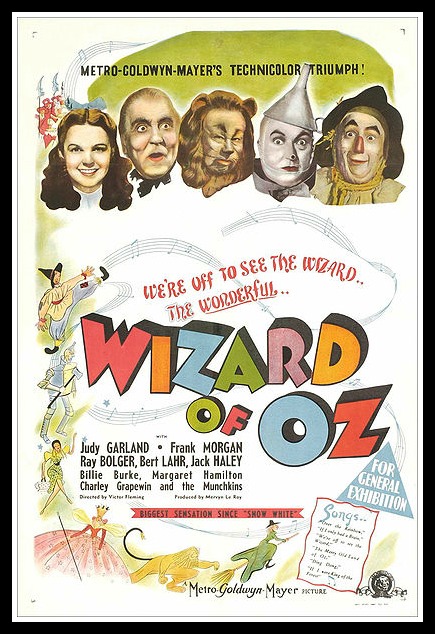
Not the first technicolor movie by a long shot and didn’t follow the books exactly (and we cover those differences in the podcast), 1939 MGM movie poster
…and didn’t quite do as well at the box-office as you would have expected. While this film lasts on mostly due to annual televised showings beginning in the mid 1950’s- the movie wasn’t a flop by any standard, but it did originally fail to be a financial success. The movie did win two Academy Awards as well as a special award for 16 year-old Judy Garland.
TIME TRAVEL WITH THE HISTORY CHICKS
So you really don’t want to read all the books in the Oz series, we get that- 40 is a lot of books. Here is a really fun shortcut to the plots and characters of each book as well as all the original cover art to them. Maybe after you read these reviews you will give in and get one of the books. And another. And another. Hey, fantasy series are all the rage these days- there is a reason and Oz started them all. Mari Ness on TOR.COM
Other than the books in the Oz series, we didn’t have a lot of recommendations for this episode. We think that the Annotated Wizard of Oz was pretty terrific, as well as the Wicked Years series by Gregory McGuire and Was by Geoff Ryman (very dark, but very good).
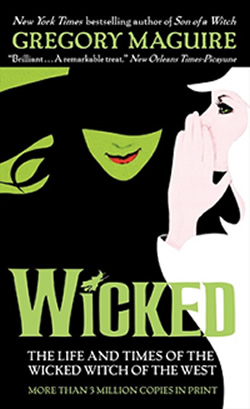
The Wicked Series by Gregory Maguire (also available on Audible.com and you can get a free book just by clicking the link to the far right, no, up higher…just sayin’)
And as far as movies go, get thee to the library and borrow the 3 -disc Collector’s Edition of the 1939 movie! So many special features you will be all Oz’d up in no time!
1978 brought a very interesting version of movie (it had previously been an Tony award winning Broadway play) The Wiz starring Diana Ross and Michael Jackson. Make your own judgement if it’s destined for Cult Movie Classic status or not.
You can catch Tin Man, the Sci-Fi channel mini-series starring Zooey Deschenel, streaming on Netflix and decide if you think it’s good (and forgive Zooey for this one) like Susan, or if you can’t get past the first episode like Beckett.
Join in the serious business at the International Wizard of Oz Clubs, or join some chat with the Royal Historians and all at The Royal Website of Oz.
The Studio 360 podcast episode “American Icons: The Wizard of Oz” can be found here, or on ITunes: Studio 360
Want to read the rest of the Evil Overlord list? Find it here: The Evil Overlord List
Investigate your name’s popularity over time at The Baby Name Wizard (warning! It’s addictive!): Baby Name Wizard
Finally, there are a pair of the Ruby Slippers Judy Garland wore in the movie at the Smithsonian, but if you are looking for an Oz museum as you cross Kansas, here is one in Wamego, Kansas ( just east of Manhattan). We have not been, but if you have let us know how it is in the comments!
As always, our music comes courtesy of Music Alley. Visit them at music.mevio.com
(closing song – If I Only Had a Brain by Elijah Tucker)

